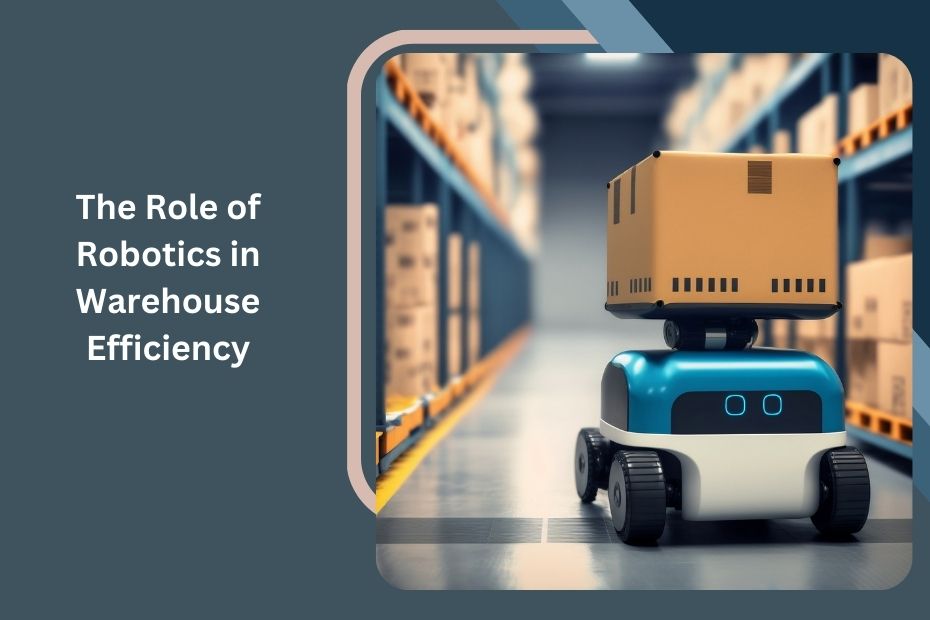In the ever-evolving world of logistics, warehouse efficiency has become a top priority, and robotics has emerged as a game-changer in optimizing operations. The integration of robotics into warehousing isn’t just about adopting new technology; it’s about creating a smarter, more streamlined workflow that drives productivity, accuracy, and safety. Here, I’ll walk through the essential role of robotics in warehouses, exploring various types of robots, their benefits, challenges, and future trends.
Understanding the Types of Warehouse Robots
Warehouse robotics encompass a variety of technologies, each designed to address specific tasks within the supply chain. Robots are built to automate processes ranging from simple transportation to complex inventory management.
- Automated Guided Vehicles (AGVs): These robots follow predetermined paths to move goods across the warehouse floor. They’re highly effective for transporting products over short and consistent routes, minimizing human labor for material handling.
- Autonomous Mobile Robots (AMRs): Unlike AGVs, AMRs use sensors and AI to navigate around obstacles and adapt to changes in their environment. They’re ideal for fast-paced, dynamic settings where flexibility is key.
- Robotic Arms: Commonly used for picking, packing, and sorting tasks, robotic arms handle repetitive and precise work at high speeds. These are especially useful for sorting products of different shapes and sizes.
- Automated Storage and Retrieval Systems (AS/RS): AS/RS units manage inventory storage and retrieval, using robotic cranes or shuttles to store goods efficiently and retrieve them as needed.
Each type of robot brings its own strengths, making it possible to optimize different warehouse functions and meet unique operational needs.
Increased Productivity Through Continuous Operation
One of the standout benefits of robotics is the ability to work continuously without the need for breaks, fatigue management, or human limitations. Robots are programmed to operate around the clock, increasing productivity significantly. I’ve seen how a warehouse that adopts automated systems can achieve higher throughput than those reliant on manual labor alone.
With robots handling repetitive tasks, human workers are freed up for roles that require critical thinking and decision-making. This shift in workforce dynamics allows warehouses to achieve better output with fewer errors, enhancing overall efficiency. The increased productivity that robotics brings often justifies the initial investment, as the long-term gains are substantial.
Enhancing Accuracy and Reducing Errors
In a busy warehouse, even minor mistakes can lead to significant setbacks. Picking errors, inventory mismatches, and misplaced items are common issues that manual operations often face. Robotics significantly reduces these errors through programmed precision. Robots follow pre-set instructions and are equipped with sensors that ensure each item is correctly identified and placed in the right location.
Reducing error rates saves time and lowers costs associated with returns, rework, and lost goods. Moreover, customers benefit from improved order accuracy, which contributes to greater satisfaction and loyalty. By minimizing errors, robots enhance the reliability of the warehouse, creating a smoother and more predictable workflow.
Improving Safety in the Workplace
Warehouse environments are often filled with heavy machinery, high shelves, and fast-moving items, making them susceptible to accidents. Robots help mitigate these risks by taking on hazardous tasks and minimizing the need for humans in high-risk areas. For example, AGVs and AMRs can handle the movement of heavy loads, while robotic arms are ideal for tasks that involve repetitive lifting, reducing strain on human workers.
Robots enhance safety and help companies comply with regulatory safety standards by minimizing the likelihood of workplace injuries. I’ve found that the introduction of robotics transforms the work environment, creating a safer space for employees and promoting a culture of health and safety within the warehouse.
Reducing Operational Costs in the Long Term
Although robotics require an initial capital investment, they can lead to substantial cost savings over time. Robots streamline tasks that would otherwise require a larger workforce, reducing labor costs. Additionally, robots are less prone to errors, which minimizes the costs associated with returns, damage, and lost items.
Operational costs are also reduced through lower utility bills and resource consumption, as robots can be programmed to optimize power usage. In my observations, the investment in robotics often pays off through these cost efficiencies, helping companies achieve a more sustainable financial model.
Real-Time Inventory Management and Enhanced Data
Inventory management is critical in any warehouse, and robotics has brought about major improvements in tracking inventory in real time. Many warehouses now use AS/RS systems and AMRs equipped with sensors that track every movement, providing real-time updates on stock levels. This level of transparency minimizes stockouts and overstock situations, enabling managers to make quick, data-driven decisions.
In warehouses where I’ve seen real-time inventory management at play, there’s a noticeable increase in efficiency. By knowing exactly what’s available and where it’s located, warehouse managers can ensure optimal stock levels, streamline replenishment, and avoid disruptions in the supply chain. The data captured by these robots also helps with forecasting, making it easier to anticipate demand and plan accordingly.
Challenges in Adopting Robotics in Warehouses
While robotics offers immense benefits, integrating these systems isn’t without its challenges. The most common hurdles include:
- High Initial Investment: The cost of purchasing and installing robotic systems can be a barrier, especially for smaller operations. Although the return on investment is promising, the upfront expense requires careful consideration.
- Integration with Existing Systems: For robotics to function effectively, they must be compatible with current warehouse management systems (WMS). Seamless integration is critical, but it can be complex and requires specialized expertise.
- Workforce Adaptation: Adopting robotics necessitates training staff to work alongside robots, which involves both learning new processes and adapting to a collaborative environment. Overcoming initial resistance and building employee confidence are essential steps in ensuring smooth implementation.
These challenges underscore the importance of a strategic approach to robotics integration. Addressing these obstacles effectively leads to a smoother transition and long-term success.
Future Trends in Warehouse Robotics
The future of warehouse robotics is exciting, with rapid advancements on the horizon:
- Artificial Intelligence Enhancements: AI-powered robots are becoming smarter and more adaptable, allowing them to perform complex tasks independently.
- Collaborative Robots (Cobots): Cobots are designed to work alongside human workers, enhancing productivity through shared tasks.
- Increased Use of Drones: Drones are gaining traction in inventory management, offering faster and more accurate stock counting.
These trends indicate a move toward more intelligent and versatile robotics in warehouses, further enhancing efficiency and making the warehouse of the future increasingly autonomous.
Key Benefits of Robotics in Warehouse Efficiency
- Continuous Operation: Robots work around the clock, boosting productivity.
- Accuracy: Reduced human error ensures accurate picking and sorting.
- Safety: Robots handle hazardous tasks, promoting a safer work environment.
- Cost Efficiency: Long-term savings from reduced labor and error costs.
- Inventory Management: Real-time tracking improves stock control.
- Future Trends: AI, cobots, and drones are shaping the future of warehousing.
In Conclusion
Robotics has become a cornerstone of modern warehouse operations, enhancing efficiency, accuracy, and safety. From AGVs and AMRs to robotic arms and AS/RS systems, each type of robot plays a key role in streamlining tasks and boosting productivity. The benefits—such as continuous operation, reduced error rates, safer work environments, and cost savings—often outweigh the initial challenges of high investment and integration. As advancements in AI, collaborative robots, and drones continue to shape the future, adopting robotics is more than just a trend; it’s a strategic step toward optimizing warehouse operations and staying competitive in a demanding supply chain environment.










